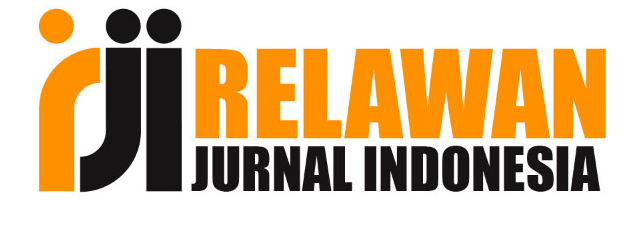RUMAH SEHAT DAN KENYAMANAN TERMAL PENCEGAHAN PENULARAN COVID-19
Sari
Abstract According to Winslow and APHA, a healthy home is defined as a place to live permanently. Serves as a place to live, rest, recreation (relax) and as a shelter from environmental influences that meet physiological, psychological requirements and are free from disease transmission. Too many occupants can increase the risk of transmission of infectious diseases. The house is a physical structure consisting of rooms, courtyards and the surrounding area which is used as a place to live and a means of fostering a family (RI Law No. 4 of 1992). According to WHO, a house is a physical structure or building for shelter, where the environment is useful for physical and spiritual health and social conditions for both the health of families and individuals. (WHO Commission on Health and the Environment, 2001).
Objective: Increase the understanding of the people of Tadenas Village regarding the importance of healthy homes and thermal comfort as well as the health effects arising from housing conditions that do not meet predetermined standards. Methods: Conduct situation analysis, problem prioritization, instrument development, and determinant surveys related to healthy homes. The intervention was carried out for the community in the Tadenas Village by measuring temperature, humidity and wind speed. Then an assessment is carried out through the results of measurements and standards that should be so that it becomes a healthy home.
Results: The low implementation of healthy housing in Tadenas Village is caused by a lack of knowledge and attitudes of the community towards the importance of meeting housing conditions standards.
Conclusion: Based on measurements with lower middle class housing conditions, the knowledge and attitude of the community towards the importance of fulfilling standard housing conditions to achieve a healthy home is still very lowTeks Lengkap:
PDFReferensi
Azwar, A. (1996). Pengantar Ilmu Kesehatan Lingkungan. Jakarta: Mutiara Sumber Widya.
Departemen Kesehatan Republik Indonesia. (2007). Pedoman Teknis Penilaian Rumah Sehat. Jakarta: Ditjen PP&PL.
Kementerian Kesehatan RI. 2020. Pedoman Pencegahan dan Pengendalian Coronavirus Disease (COVID-19).
Kementerian Kesehatan Republik Indonesia. 2019. Profil Kesehatan Indonesia tahun 2018.
Kepmenkes RI No. 829/Menkes/SK/VII/1999 tentang Persyaratan Kesehatan Perumahan. Jakarta: Departemen Kesehatan R.I.Krieger J and Higgins DL. (2002). Housing and Health: Time Again for Public Action. Am J Public Health 92:5, 758-759.
Nugroho, E., Ningrum, D. N. A., Kinanti, A., Listianingrum, D., Adeliani, M., Ulfah, N., & Yuswantoro, R. N. (2021). Urban Community Perceptions and Experiences about Social Distancing During the Covid-19 Pandemic. KEMAS: Jurnal Kesehatan Masyarakat, 17(1), 139-144.
Peraturan Menteri Kesehatan Republik Indonesia nomor 1077 tahun 2001 tentang Pedoman Penyehatan Udara dalam Ruangan Rumah.
Sari, A. R., Rahman, F., Wulandari, A., Pujianti, N., Laily, N., Anhar, V. Y., ... & Muddin, F. I. (2020). Perilaku Pencegahan Covid-19 Ditinjau dari Karakteristik Individu dan Sikap Masyarakat. Jurnal Penelitian dan Pengembangan Kesehatan Masyarakat Indonesia, 1(1).
Setiyadi, N. A., Umaroh, A. K., Wahdiyati, Y., & Septiyanti, R. (2021). Pelayanan Rumah Sehat COVID-19 Inovasi Pengendalian Mortalitas dan Morbiditas: Studi Kasus di Kabupaten Sukoharjo, Indonesia. Jurnal Penelitian dan Pengembangan Kesehatan Masyarakat Indonesia, 2(1), 1-10.
Sitorus Pane, B., 2015. Peranan Olahraga dalam Meningkatkan Kesehatan. JURNAL Pengabdian
Kepada Masyarakat
Tayeb, 2016. Evaluasi Kenyamanan Termal Ruang Dapur. Seminar Ikatan Peneliti Lingkungan Binaan Indonesia, Malang, Indonesia. ISBN/ISSN: 978-602-61104-0-4
WHO. 2020. Q&A: How is COVID-19 transmitted?
WHO. 2018. WHO Housing and health guidelines.
WHO SEARO (1986) Environmental Health Aspects of Industrial and Residential Area. Regional Health Papers No. 11. New Delhi: WHO Regional Office for South East Asia.
Wijayanti, P. Y., & Yuantari, M. G. C. (2021). Kepatuhan Penerapan Protokol Kesehatan pada Pekerja di Tempat Ibadah Selama Pandemi Covid-19. Jurnal Penelitian dan Pengembangan Kesehatan Masyarakat Indonesia, 2(2), 129-140.
DOI: https://doi.org/10.33387/pengamas.v6i2.5769
Refbacks
- Saat ini tidak ada refbacks.
e-ISSN: 2622-383X || PengaMAS Stats:
pengaMAS Indexing:

This work is licensed under a Creative Commons Attribution 4.0 International License










